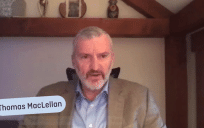 Robert Agranoff, a public administration scholar, defines the concept of collaborative public management as a process of assisting and managing multiorganizational arrangements to solve problems that are not easily solved by one organization alone.
Robert Agranoff, a public administration scholar, defines the concept of collaborative public management as a process of assisting and managing multiorganizational arrangements to solve problems that are not easily solved by one organization alone.
In the public sector, we often find ourselves in need of others’ support to resolve issues. We call on the support of other public organizations or even private partnerships. It’s important to understand collaborative public management as an additional tool in our toolbox to become better public administrators.
Crossing Organizational Boundaries
While collaborative public management has hundreds of definitions, one of the easiest ways to see this process in action is when agencies cross the boundaries of the organization. On a day to day basis, public agencies interact with a number of private and public organizations. These collaborations could be a quick phone call or perhaps a formal agreement. Think about your day and how often you go outside your organization for support. In the moment, you are crossing organizational boundaries and supporting collaborative public management.
Conductive Organizations
Robert Agranoff defines a conductive agency or organization as one that “engages in dismantling the boundaries of its structure and functions by connecting with a variety of external organizations and interests to strategically and operationally enhance its performance.”
Conductive organizations establish themselves internally through policies and procedures and also work outside the agency to achieve their work. Highly conductive organizations benefit from the added support and knowledge to help achieve their goals and mission.
A Mix of Collaborative Efforts
Collaborative public management practices are not one-size-fits-all. Efforts are going to look very different depending on the agency, its leadership and its issues.
There are different types of collaborative efforts that range from minimal engagement to intermittent interaction to maximum engagement. Minimal engagement examples include grant negotiations, occasional liaison meetings, and contact between organizations to seek information. Intermittent engagement examples include government loans, public-private partnerships, and procurement of goods. Maximum engagement includes regular interaction such as jointly sponsored services, technical workgroups and councils of public agencies.
Embracing Collaborative Public Management
It’s not often we come across concepts for what we do in public service. Conductive public management is another way to explain the networks we are part of and how to support them. Take this new knowledge and think about it next time you’re on a call with someone outside your organization. Think about ways you can bring community partners in to support your mission.
Are you a part of a conductive organization? What are some ways you support collaborative public management? Share your examples below in the comments.
You may also be interested in Robert Agranoff’s book “Collaborating to Manage: A Primer for the Public Sector” and GovLoop’s article “What Do We Know About Inter-Organizational Networks?“
Maribel Castañeda currently serves at the pleasure of Virginia Governor Ralph S. Northam as the Director of Appointments in the Secretary of the Commonwealth’s Office. She facilitates the appointment process for over 300 state boards and commissions or about 800 appointments each year. She bridges communication between constituents, state agencies, Governor’s Cabinet and organizations who want to share a voice in their government. Her vision is to have each board and commission reflect the Virginia that exists today. Maribel also serves as the Director of Latino Outreach connecting the Hispanic and Latino community to resources and services.




Leave a Reply
You must be logged in to post a comment.